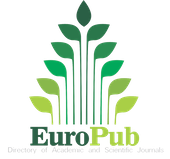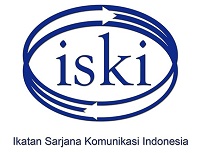The Implication Of Social Media Toward College Students’ Online Behavior In Bandung
Abstract
Keywords
Full Text:
PDFReferences
Allen, K. A., Ryan, T., Gray, D. L., Mcinerney, D. M., & Waters, L. (2014). Social Media Use And Social Connectedness In Adolescents: The Positives And The Potential Pitfalls. Australian Educational And Developmental Psychologist, 31(1), 18–31. Https://Doi.Org/10.1017/Edp.2014.2
Andreassen, C. S. (2015). Online Social Network Site Addiction: A Comprehensive Review. Current Addiction Reports, 2(2), 175–184. Https://Doi.Org/10.1007/S40429-015-0056-9
Asosiasi Penyelenggara Jasa Internet Indonesia. (2019). Laporan Survei Internet APJII 2019 - 2020 [Q2]. APJII. https://apjii.or.id/survei 2019x
Baldwin, J. R, Perry, S. D, Moffit, M. A. (2004). Communication Theories for Everyday Life, Pearson Education, Inc., Boston, USA.
Baruah, T. D. (2012). Effectiveness Of Social Media As A Tool Of Communication And Its Potential For Technology Enabled Connections: A Micro-Level Study. International Journal Of Scientific And Research Publications, 2(5), 1–10. Https://Doi.Org/Issn 2250-3153
Business Today. (2021). Coronavirus: 87% increase in social media usage amid lockdown; Indians spend 4 hours on Facebook, WhatsApp. Busines Today. https://www.businesstoday.in/technology/news/coronavirus-87-percent-increase-in-social-media-usage-amid-lockdown-indians-spend-4-hours-on-facebook-whatsapp/story/399571.html
Bányai, F., Zsila, Á., Király, O., Maraz, A., Elekes, Z., Griffiths, M. D., Andreassen, C. S., & Demetrovics, Z. (2017). Problematic social media use: Results from a large-scale nationally representative adolescent sample. PLoS ONE, 12(1), 10–14. https://doi.org/10.1371/journal.pone.0169839
Burke, M., & Kraut, R. E. (2016). The Relationship Between Facebook Use and Well‐Being Depends on Communication Type and Tie Strength. Journal of Computer-Mediated Communication. https://doi.org/10.1111/jcc4.12162
Chan, M. (2015). Multimodal connectedness and quality of life: Examining the influences of technology adoption and interpersonal communication on well-being across the Life Span. Journal of Computer-Mediated Communication, 20(1), 3–18. https://doi.org/10.1111/jcc4.12089
Echeburúa, E. et al. (2010). Adicción a las nuevas tecnologías y a las redes sociales en jóvenes: un nuevo reto. Adicciones, Vol. 22, p. 91–96. ISSN 0214-4840.
Irwanto, I., & Hariatiningsih, L. R. (2019). Aktivitas Santap dan Minum Generasi Z pada Media Sosial Instagram. Mediator: Jurnal Komunikasi, 12(2), 141–154. https://doi.org/10.29313/mediator.v12i2.5048
Kircaburun, K., & Griffiths, M. D. (2018). Instagram Addiction And The Big Five Of Personality: The Mediating Role Of Self-Liking. Journal Of Behavioral Addictions, 7(1), 158–170. Https://Doi.Org/10.1556/2006.7.2018.15
Kominfo. (2020, April 17). Penggunaan Internet Naik 40% Saat Bekerja dan Belajar dari Rumah. https://www.kominfo.go.id/content/detail/25881/penggunaan-internet-naik-40-saat-bekerja-dan-belajar-dari-rumah/0/berita_satker
Kuss, D. J. et al. (2014). Internet addiction: A systematic review of epidemiological research for the last decade. Current Pharmaceutical Design, Vol. 20, p. 4026–4052. ISSN 1873-4286.
Lee, E., Lee, J. A., Moon, J. H., & Sung, Y. (2015). Pictures Speak Louder than Words: Motivations for Using Instagram. Cyberpsychology, Behavior, and Social Networking, Vol. 18, No.9. DOI: 10.1089/cyber.2015.0157
Manurung, G. V., Rewindinar, R., & Marta, R. F. (2020). Optimization Instagram Content as @gokampusofficial Brand Communication Medium. Mediator: Jurnal Komunikasi, 13(2), 203–216. https://doi.org/10.29313/mediator.v13i2.6402
Meier, A., & Reinecke, L. (2020). Computer-Mediated Communication, Social Media, and Mental Health: A Conceptual and Empirical Meta-Review. Communication Research, 48(8), 1182–1209. https://doi.org/10.1177/0093650220958224
Nonnecke, B. & Preece, J. (2000). Lurker demographics: counting the silent. Proceedings of the SIGCHI conference on Human Factors in Computing Systems (CHI '00). Association for Computing Machinery, New York, NY, USA, 73–80. https://doi.org/10.1145/332040.332409.
Nonnecke, B. & Preece, J. (2001). Why Lurkers Lurk. AMCIS 2001 Proceedings. https://aisel.aisnet.org/amcis2001/294/.
Orben, A., & Przybylski, A. K. (2019). The association between adolescent well-being and digital technology use. Nature Human Behaviour, 3(2), 173–182. https://doi.org/10.1038/s41562-018-0506-1
Rau, P.L.P., Gao, Q., & Ding, Y. (2008). Relationship Between The Level Of Intimacy And Lurking In Online Social Network Services. Computers in Human Behavior. https://doi.org/10.1016/j.chb.2008.04.001
Risius, M., & Beck, R. (2015). Effectiveness Of Corporate Social Media Activities In Increasing Relational Outcomes. Information And Management, 52(7), 824–839. Https://Doi.Org/10.1016/J.Im.2015.06.004
Sampurno, M. B. T., Kusumandyoko, T. C., & Islam, M. A. (2020). Budaya Media Sosial, Edukasi Masyarakat, dan Pandemi COVID-19. SALAM: Jurnal Sosial Dan Budaya Syar-I, 7(5). https://doi.org/10.15408/sjsbs.v7i5.15210
Sheldon, P. & Newman, M. (2019). Instagram and American Teens: Understanding Motives for Its Use and Relationship to Excessive Reassurance-Seeking and Interpersonal Rejection. The Journal of Social Media in Society, Vol. 8, No.1, p. 1-16. https://www.thejsms.org/tsmri/index.php/TSMRI/article/view/423
Siste, K., Hana, E., Sen, L. T., Christian, H., Siswidiani, L. P., Limawan, A. P., & Murtani, B. J. (2020). The Impact of Physical Distancing and Associated Factors Towards Internet Addiction Among Adults in Indonesia During COVID-19 Pandemic : A Nationwide Web-Based Study. 11(September), 1–11. https://doi.org/10.3389/fpsyt.2020.580977
Spears, R. (2017). Social Identity Model of Deindividuation Effects. The International Encyclopedia of Media Effects. https://doi.org/10.1002/9781118783764.wbieme0091.
Suryono, J., Rahayu, N. T., Astuti, P. I., & Widarwati, N. T. (2020). Successful Social Media Advertising Activities For Micro, Small And Medium Enterprises. Mediator: Jurnal Komunikasi, 13(1), 108–117. https://doi.org/10.29313/mediator.v13i1.5782
Tao, R., Huang, X., Wang, J., Zhang, H., Zhang, Y., & Li, M. (2010). Proposed diagnostic criteria for internet addiction. Addiction, Vol. 105, No. 3, p. 556-554. DOI: 10.1111/j.1360-0443.2009.02828.x
Xu, H., & Tan, B.C.Y. (2012). Why do I keep checking Facebook: Effects of message characteristics on the formation of Social Network Services Addiction. International Conference on Information Systems, ICIS 2012 1:812-823. ScholarBank@NUS Repository.
DOI: https://doi.org/10.29313/mediator.v15i1.8845
Refbacks
- There are currently no refbacks.

This work is licensed under a Creative Commons Attribution 4.0 International License























